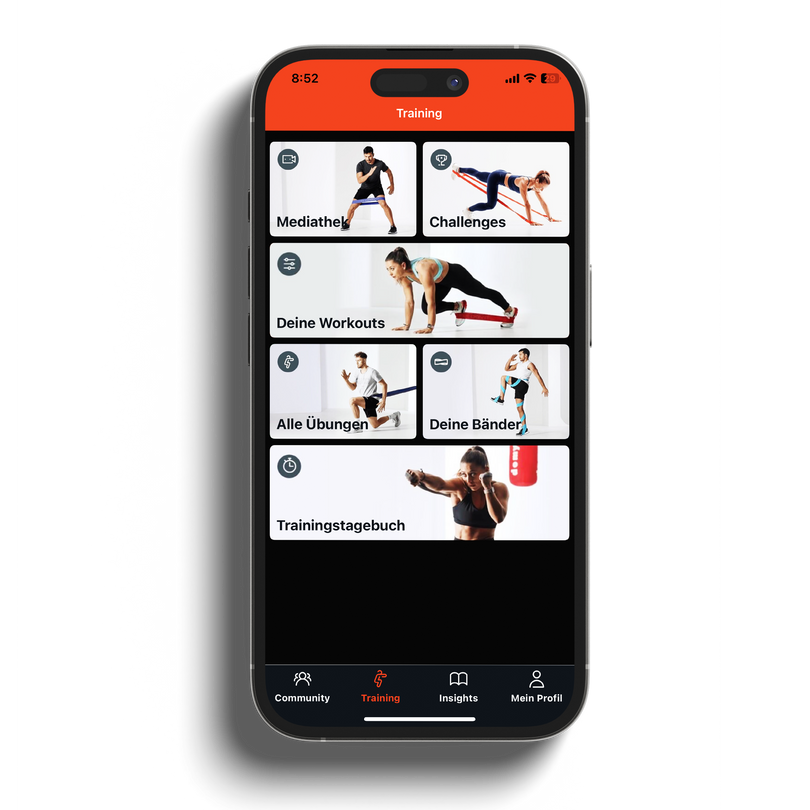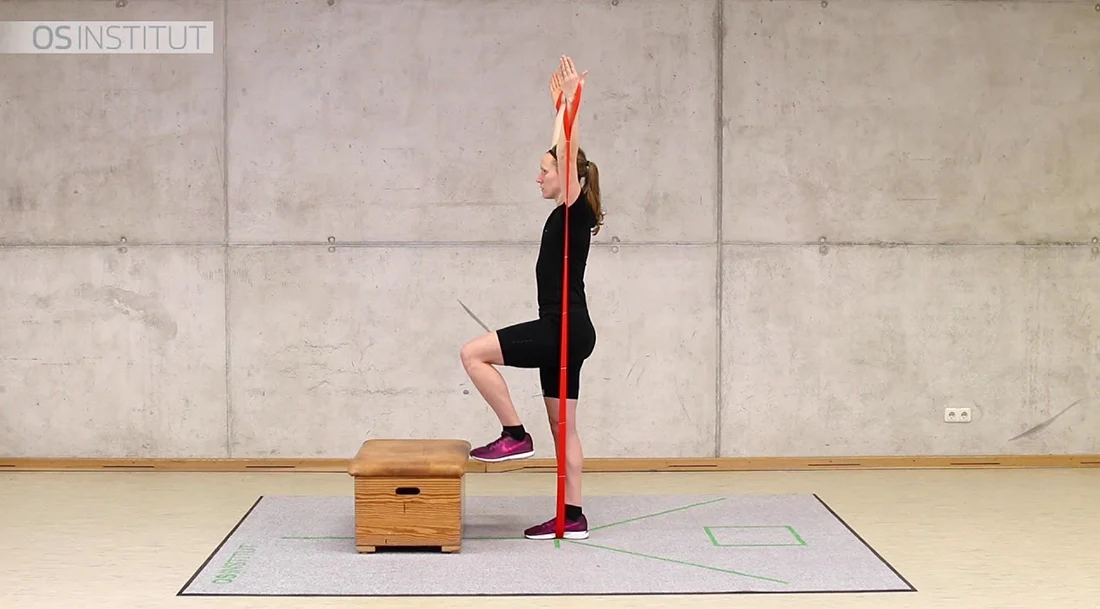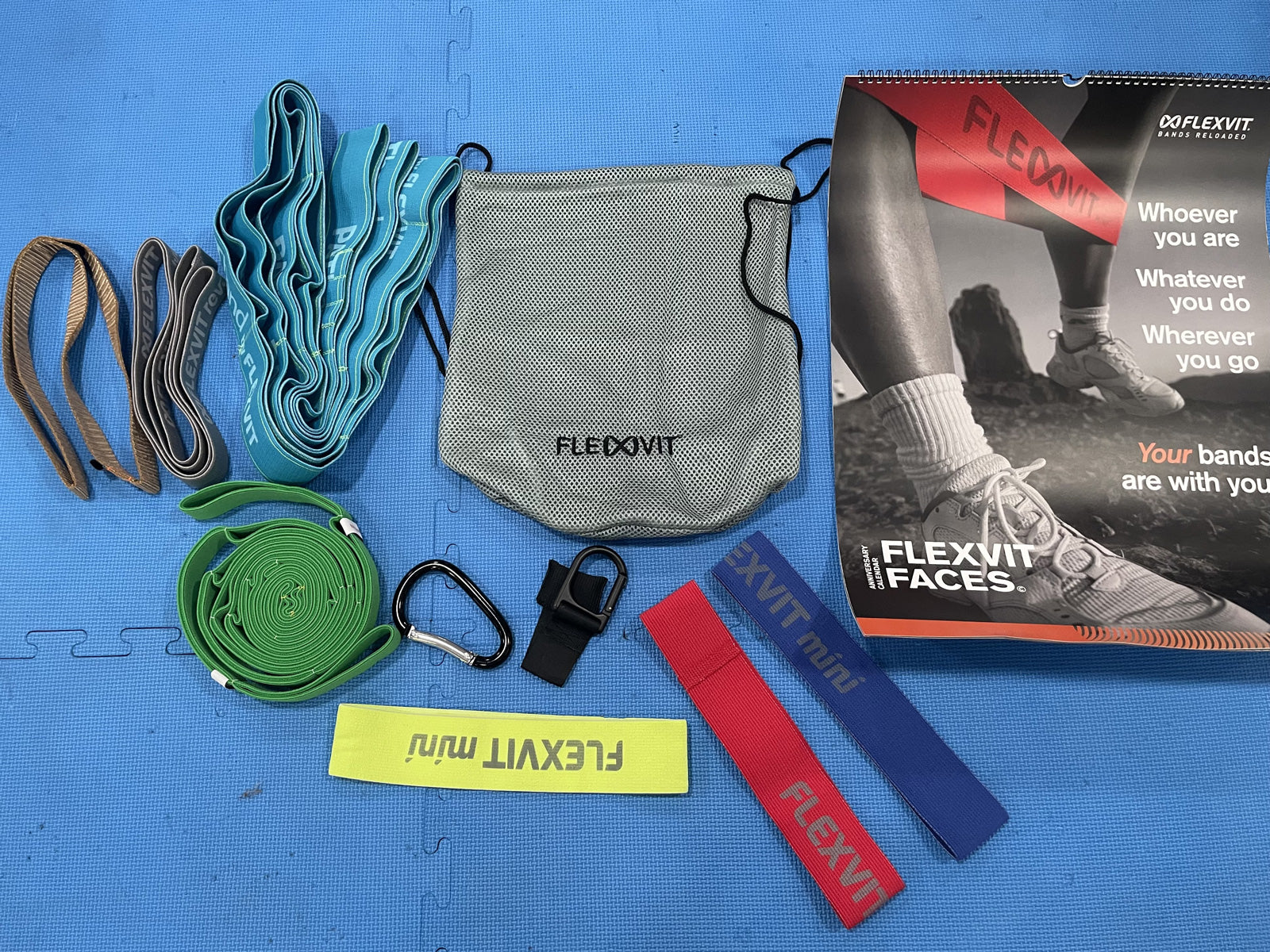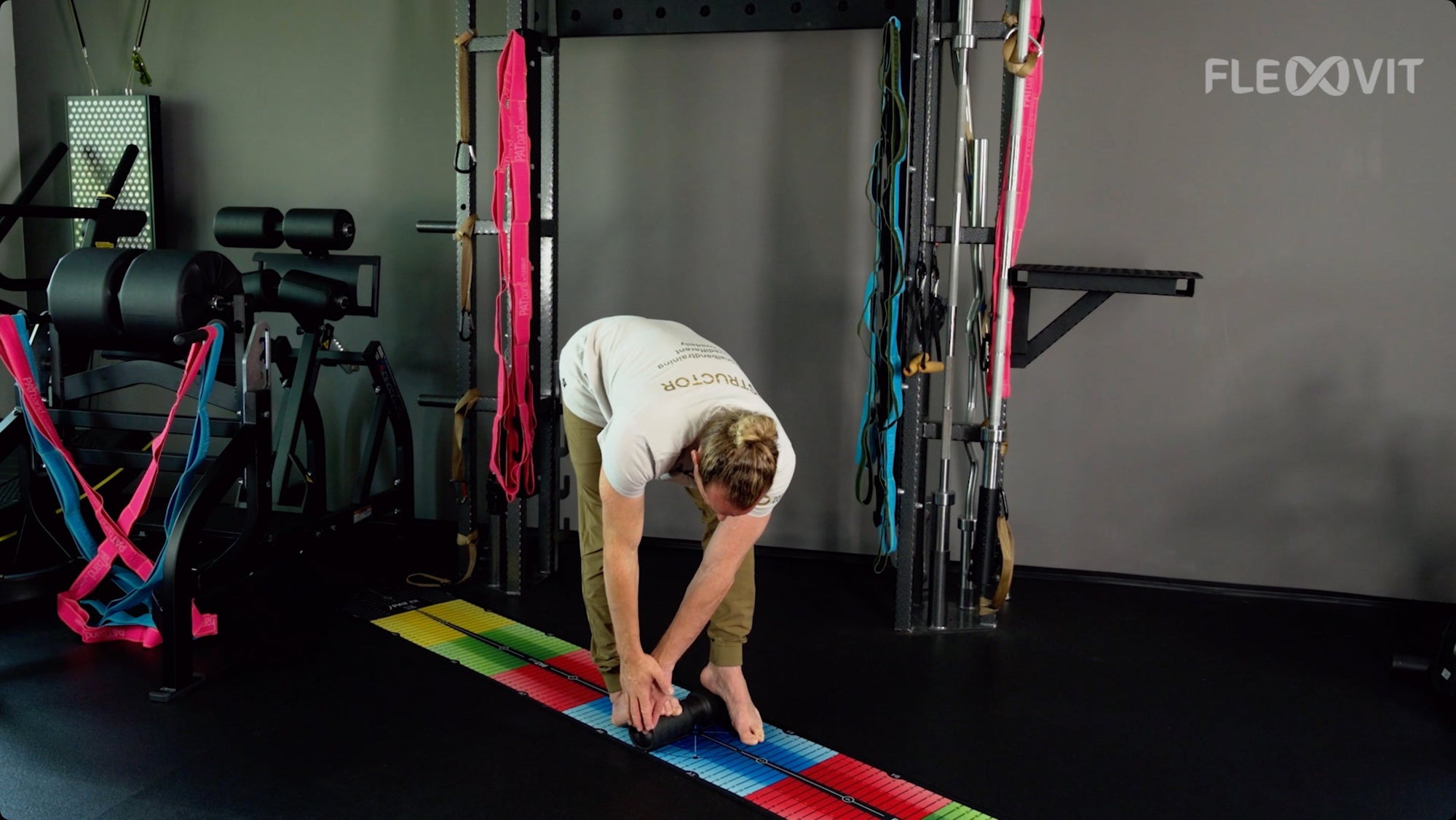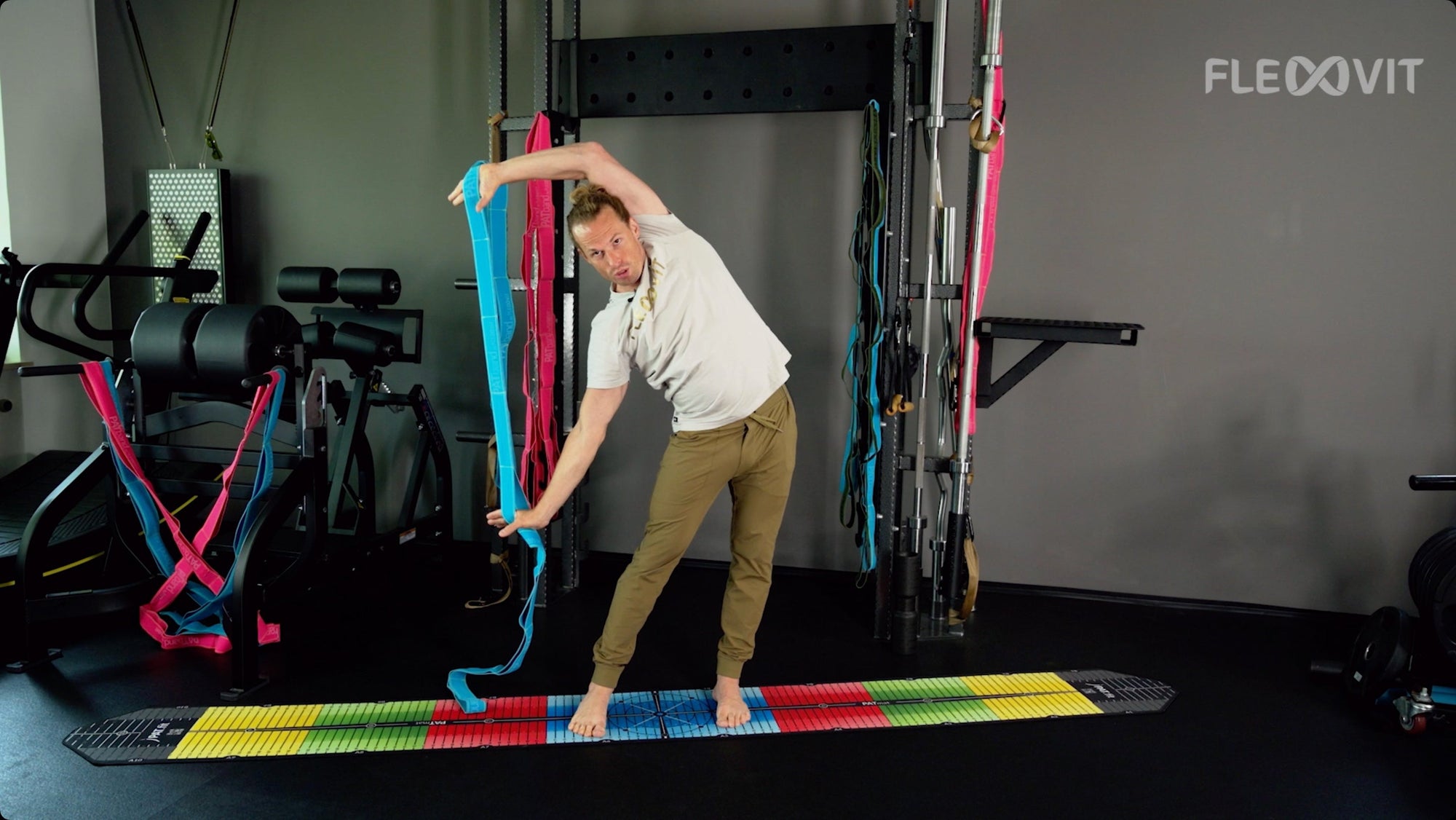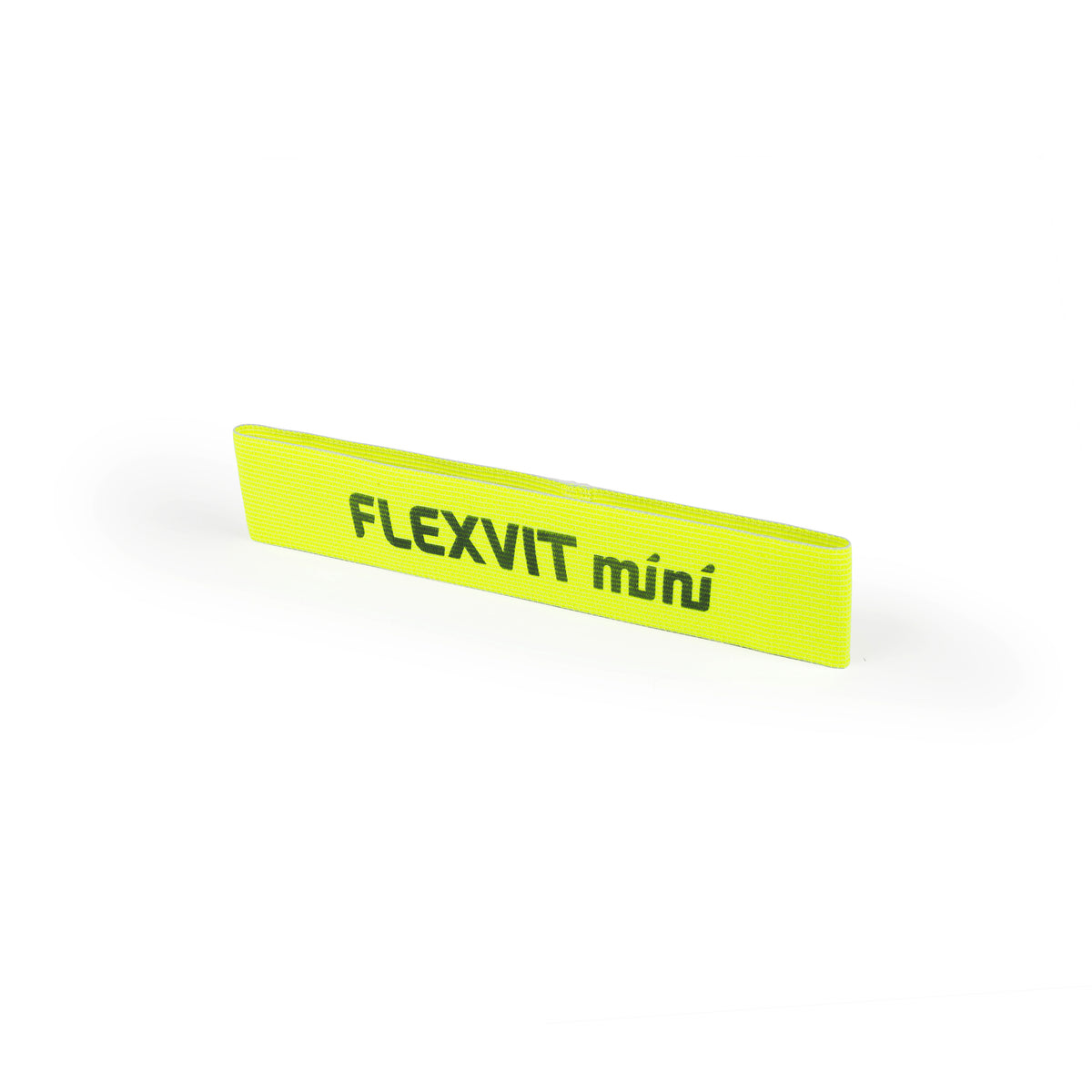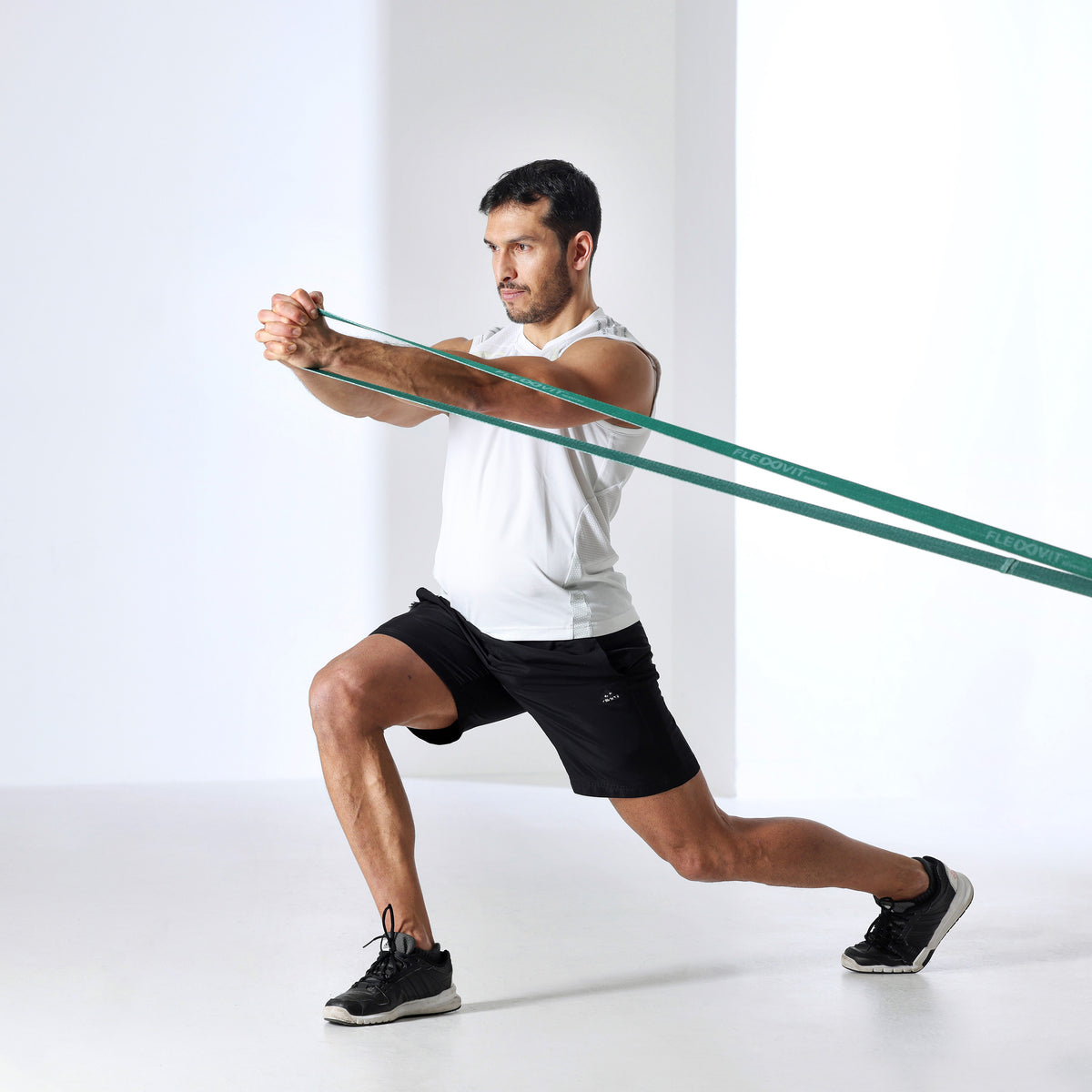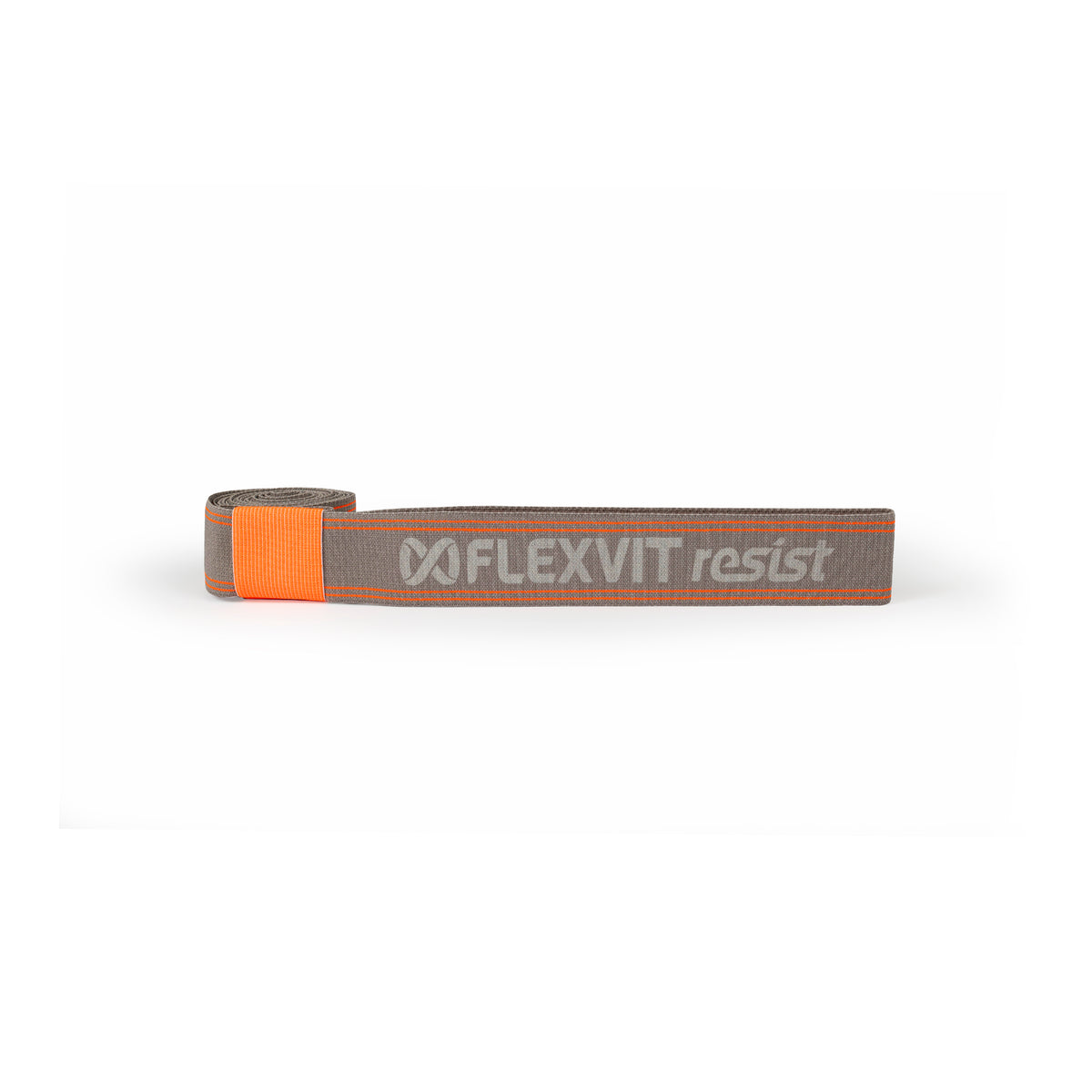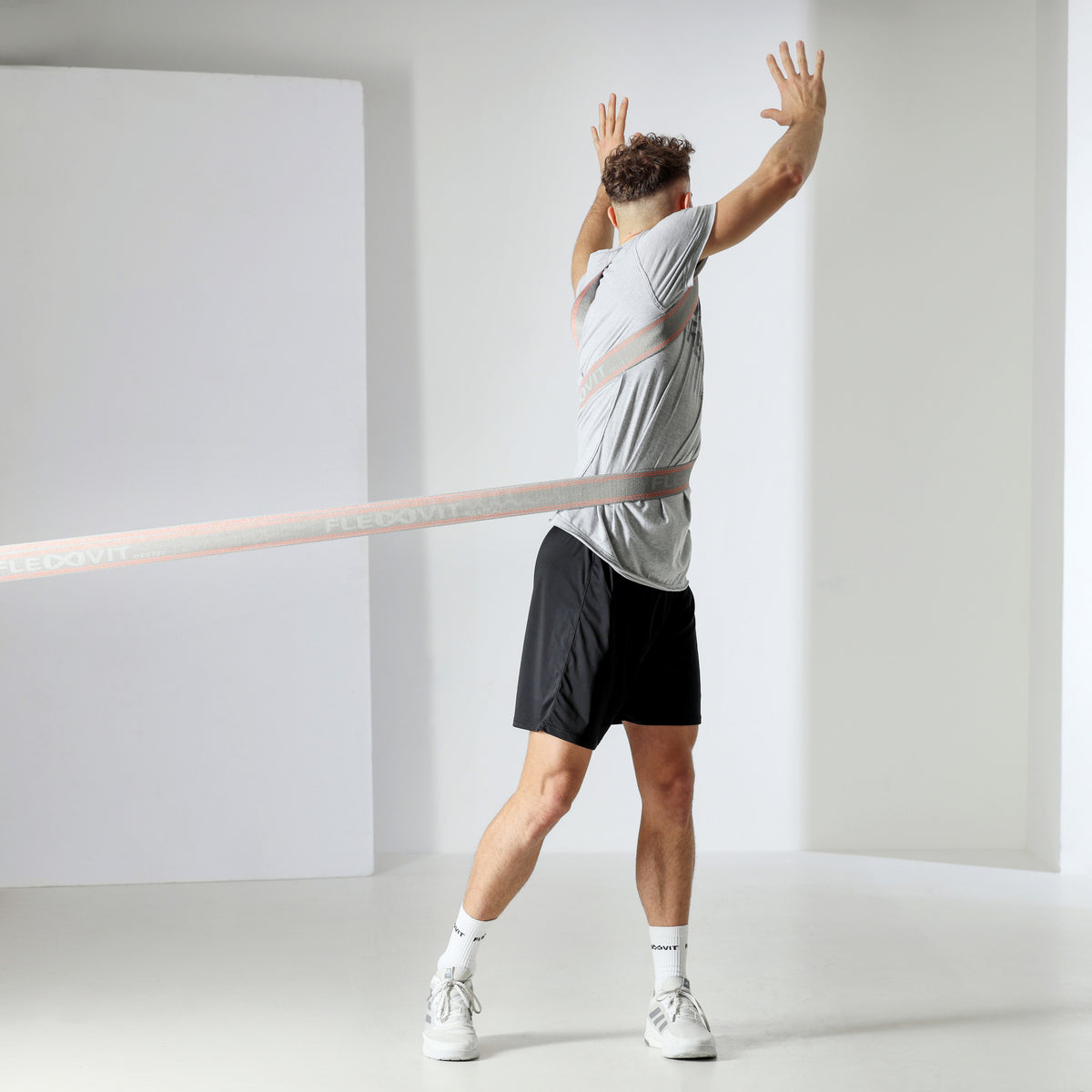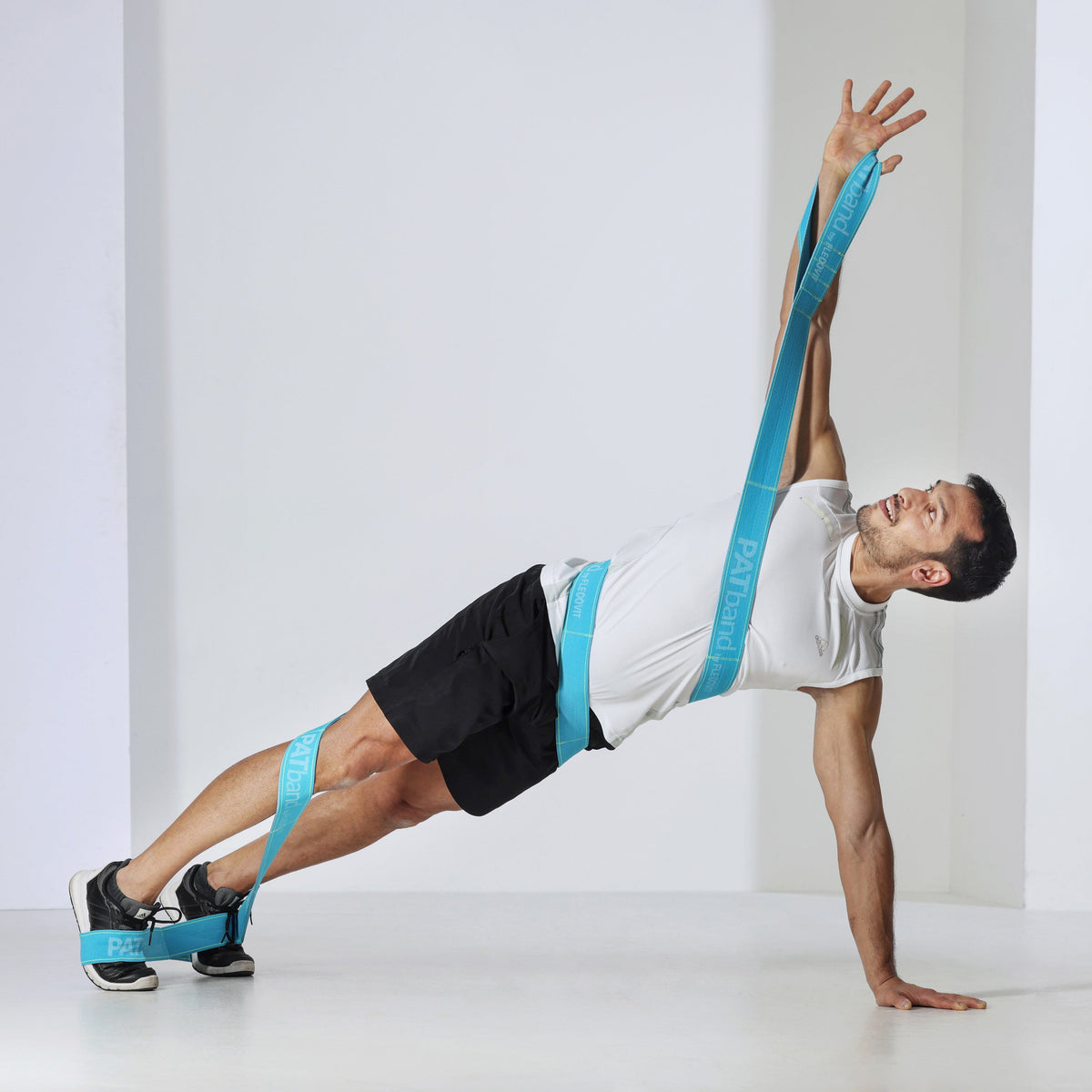At the beginning a short digression regarding the control circuit of sporting training
What question should you always ask yourself before starting training?
What goal and requirement profile does the athlete have?
- Moshe Feldenkreis (1987) once said: “Only if we know what we are doing (why) can we do what we want.” This means that our actions should or rather must be theory-guided in order to create an optimal situation/adaptation.
Which form of training do I choose to achieve the overarching goal, e.g
- Whole body stabilization
- Muscular control of the extremities
- Support activity
- maneuverability etc.
What adjustments should occur e.g
- Intra- or intermuscular adjustments
- Structural adjustments
- Cortical & corticospinal adjustments
Why did I choose this training e.g.:
- Aspect: Power transmission (derivating action force)
- Aspect: Improve target motor function
Especially when working with athletes, the implementation of external forces and the subsequent adaptation or reaction of the organism are central components of the work and can no longer be imagined without them in daily work with athletes in order to further develop the sport-specific movement [1]. In order for the overarching goals to be achieved, the biological and central nervous system must coordinate an incredible number of regulatory processes. Due to this polycentric nature, it is still very difficult to define the motor type of stress “force” [2]. Ultimately, systematic strength training always leads to a wide variety of adaptation phenomena, depending on the training form/methodology and the athlete's goals, all of which influence the manifestations of motor strength to a certain extent [3]. Training materials provide the appropriate framework within which the trainee moves with the appropriate training methodology. The athlete is thus provided with learning-relevant information from outside (exteroceptively) in a variety of ways in order not only to adapt his biological systems, but also to improve his exercise program [4].
And now pay attention:
The selection of training materials and the associated training methodology always depends on the points mentioned above. These are subject to certain rules and should meet the requirements profile of the person. You always have to be aware of this, so an assessment of whether one exercise is more functional than another is actually not possible in advance for the reasons mentioned here!!
Bands have proven to be a practical training tool in practice. But it's not just in practice and social media that there is a constant progression of exercises with bands, you can now also find more and more well-founded articles on this topic in science. If you enter the term “elastic resistance training” on Pubmed, you currently get 130 hits on this topic [5]. However, the large number of publications only appeared after the turn of the millennium. This clearly shows the relevance and acceptance with which science has recently pursued this topic in order to provide relevant scientific facts about the individual theories. But it also shows that from a scientific perspective this topic is still in its infancy, but is constantly growing.
What is training with elastic resistance bands actually suitable for?
The mechanical context:
In order to answer the question adequately, one should look into the properties of tapes. Keyword: force curve or force increase-deformation distance relation: the greater the deformation, the greater the force that acts. But this also means that the greater the force required for a certain deformation path, the harder or stiffer the system is [4]. The band thus counteracts the stretching with a force and this increase, shown in a force deformation curve, is called the stiffness (counterforce per path). In most literature, only the “length-load relationship” is assessed and then spoken of as a non-linear force curve [6], which, relatively speaking, is not entirely true, because according to “Hooke's law “ there is a region of elasticity (plastic region) which states that the deformation is proportional to the load [7]. This means that there is, so to speak, a constant linear component even with bands.
What type of conditioning is possible with resistance bands?
For a long time it was assumed that elastic resistance training only led to an increase in maximum strength, both in trained and untrained people [8, 9]. However, we now also know that the variable resistance created by the use of such bands can have a positive influence on both eccentric muscle work and explosive power [6]. Saied's research group also showed that jumping intensity and jumping performance can be modulated by using bands. This leads to a more effective technique and thus generates a more optimal benefit on the stretch-shortening cycle mechanism. Furthermore, the researchers found that the induced “preloading” leads to a higher level of muscle stiffness [13] and this can ultimately lead to improved injury prevention during sport-specific movements. This seems to be a more practical solution compared to conventional resistance training. 
Figure 1 “Length-resistance ratio” for the minibands
Why does it seem that way? Because the change in muscle activation due to elastic resistance training has not yet been sufficiently proven for all multi-joint exercises [8]. You should know that muscle activation depends on several components. On the one hand, from the measurement method itself, because the surface EMG estimates more the neuronal activation. On the other hand, the intensity [9], which in turn depends on the absolute load at the respective angles [2, 3], as well as on the point of force introduction and dissipation and the anthropometric characteristics of the person (lever arm) themselves, which ultimately lead to additional work can [10]. From a biomechanical point of view, ligaments would have to change their force production in accordance with the “force-distance relationship” in both unfavorable and favorable leverage conditions [1,3]. And that's where the rub lies. Due to their material properties, the bands cannot completely cover this spectrum, although they can generate a variable resistance. The variety of training materials must therefore take into account the individually different anthropometric requirements. That's why there is no such thing as an “all-in-one training tool”. Exact knowledge of how individual training agents work is absolutely necessary in order to adequately use the mechanical specificity and the associated effect. The advantage of using bands is an accentuation of movement sequences. So you could say that the principle of specificity is taken into account exactly when the resistance curve is to be changed in order to increase the load in a specific position. Bands should therefore be attached beforehand by the trainer or the trainee in such a way that the section of movement that has turned out to be a “weak link/sticking point” is hit, or in order to improve the motor skills of the movement within a certain range.
Is coordination training with bands even possible in the sense of sport-specific alignment of basic skills?
To this end, Haudum and colleagues [12] examined the effect of elastic resistance training on ball speed and serve accuracy in volleyball players (constant/variable situation) over 18 sessions twice a week. 25 serves took place within one session. It turned out that ball speed in particular increased significantly after the intervention in variable game situations. The measurement of accuracy did not reveal similarly positive results, but it is not negatively influenced by this intervention.
The use of elastic resistance bands is not just limited to improving physical abilities in the classic sense, because through the correct use, changes can be achieved on a neuronal level; Keyword: “Technology and coordination training”. With this in mind, training with bands obviously provides sufficient variability during movement production. The resulting pertubations lead to supporting but also counterproductive forces, resulting in greater fluctuations at the muscular level (72% higher IEMG variability) despite constant environmental conditions (during real movement) [11]. The internal focusing resulting from the increased variability leads to movement adjustment in the programming center [4]. This adaptability of the nervous system clearly shows how well our CNS can cope with unpredictable constraints and reactive phenomena.
Limitation of bands:
Finally, it should be mentioned that in practice it is still very difficult to precisely quantify the resistance (load management). The result of this, systematic strength training, is usually intuitive in terms of progression and therefore does not correspond to the recommended rules found in research [14]. 
Figure 2 “Length-resistance ratio” for the multis
Fortunately, McMaster and colleagues [14] were able to verify that when testing the variable resistance of bands, a load cell delivers identical values to a force plate (p ≥ 0.05), which in practice represents a cost-effective alternative to the force plate. The investigators also categorized bands in terms of tension and resistance. The classification of the bands records the strength of the resistance depending on the length, width and stiffness.
The resistance can be precisely determined during an exercise in a certain position by using a specific band.
The method they developed creates a certain degree of clarity regarding the quantification of variable resistance, which can of course be useful for given specific load intensities.
It should be mentioned that not every belt manufacturer produces products of the same stiffness and length as those used in McMaster's work and therefore the actual loads can unfortunately vary depending on the manufacturer. Individual companies are aware of this problem. Unfortunately, not all of them provide a force curve for their products. A positive example in this regard is the company “Flexvit”. This attempts to solve the problem very transparently by adding such a curve to each band. (Figure 1 & 2).
TAKE HOME MESSAGES:
➜ Elastic resistance training creates variable resistance.
➜ Training programs that use elastic bands lead to an increase in maximum strength in both trained and untrained people.
➜ The use of bands can optimize the ability to overcome the “sticking point”.
➜ The use of bands increases the eccentric impulse and thus the eccentric muscle work.
➜ Another consequence of variable resistance is the exploitation of reactive phenomena. This in turn leads to an increase in explosive power.
➜ There is a positive benefit on the stretch-shortening cycle.
➜ Internal focusing (proprioception) for the trained area increases, triggered by so-called pertubation, which results in movement adjustments.
➜ The variable loading caused by the ligaments appears to require greater stabilization and may therefore reduce peak forces.
➜ The area of application of bands is not limited to physical fitness skills, but also directly or indirectly influences coordination skills depending on the objective.
Sources
- Bant, H., Hass, HJ, Ophey, M., & Steverding, M. (2011). Sports physiotherapy (1st ed.). Stuttgart: Georg Thieme Verlag.
- Hollmann, W., & Strüder, HK (2009). Sports medicine. Fundamentals of physical activity, training and preventive medicine (5th ed.). Stuttgart: Schattauer.
- Weineck, J. (2007). Performance-physiological training theory with special consideration of child and youth training (15 ed.). Balingen: Spitta Verlag GmbH & Co. KG.
- Güllich, A., & Krüger, M. (2013). Sport: The textbook for studying sports (1st Ed.). Berlin Heidelberg: Springer Verlag.
- https://www.ncbi.nlm.nih.gov/pubmed, (2017)
- https://www.scienceforsport.com/elastic-resistance-training/
- Sokolnikoff, IS (1956). Mathematical theory of elasticity. McGraw-Hill book company
- Iversen, VM, Mork, PJ, Vasseljen, O., Bergquist, R., & Fimland, MS (2017). Multiple-joint exercises using elastic resistance bands vs. conventional resistance-training equipment: A cross-over study. European Journal of Sport Science, 17(8), 973-982.
- Farina, D. (2006). Interpretation of the surface electromyogram in dynamic contractions. Exercise and sport sciences reviews, 34(3), 121-127.
- Rippetoe, M. (2015). Starting Strength (1st Ed.). Munich: Riva Verlag.
- Haudum, A., Birklbauer, J., Kröll, J., & Müller, E. (2012). Constraint-led changes in internal variability in running. Journal of sports science & medicine, 11(1), 8.
- Haudum, A., Birklbauer, J., Kröll, J., & Müller, E. (2011). Motor learning of gross-motor skills under variable practice conditions. Physical training. Sports, 80(1), 22-28.
- Aboodarda, SJ, Byrne, JM, Samson, M, Wilson, BD, Mokhtar, AH, & Behm, DG (2014). Does performing drop jumps with additional eccentric loading improve jump performance?. The Journal of Strength & Conditioning Research, 28(8), 2314-2323.
- Mcmaster, DT, Cronin, J., & McGuigan, MR (2010). Quantification of rubber and chain-based resistance modes. The Journal of Strength & Conditioning Research, 24(8), 2056-2064.
Note: This article is a guest article from www.physio-friedl.de

